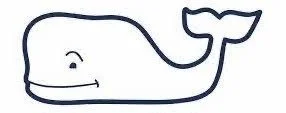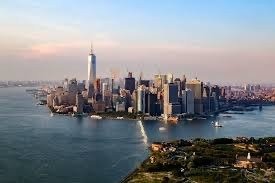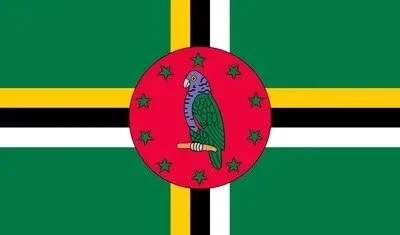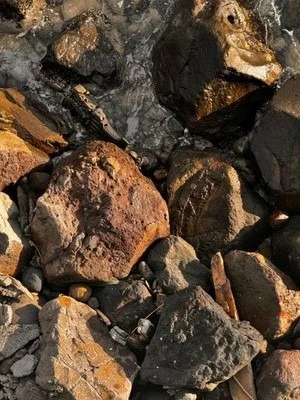Chapter 2: Flying to Dominica
The Commonwealth of Dominica pronounced dom-in-EE-ka lies in the eastern Caribbean, between Guadeloupe and Martinique, 1,400 miles southeast of Miami. It is the 131st nation I have had the privilege to visit.
From Miami International Airport, my Envoy Air Embraer 175 (American Eagle/American Airlines) three hour and forty minute non-stop landed at 1:50 in the afternoon. MIA offers flights to lots of places I've never been.
The view from the air shows a coastline that is somewhat developed and an untouched mountainous interior. The approach to the runway involves a quick hook around a mountain and a wide turn to line up. But all is well as there is minimal wind. The airport is small, the jetway is primitive and clearing customs and immigration is a breeze. Everyone smiles, even the immigration guy. Taxi driver Ryan offers me a private lift to the Fort Young Hotel for $80--it takes a bit over an hour. He is a gentlemen and has me sit up front with him so that he can offer a proper orientation as we drive across the center of the island between the two mountains here. One is 4550 feet above sea level while the other is 4747 feet. Both are shrouded in clouds, typical for this type terrain. It is hot at the airport which is at sea level on the Atlantic side of the island and cool as we rise through the hills to traverse the island, then hot again as we arrive in the city of Roseau on the Caribbean side of the island.
I'm expected at the hotel and quickly escorted to room 411 which offers a lovely view of the sea. I head for the dive shop as I need to rent mask, fins and snorkel for this week's activities. The dive shop buy suggests that I head down to the dock where Patrick Dykstra, my host for the next few days, is just about to land with this week's group at the end of their last day on the water.
I introduce myself and he is a gentleman, modest but also outgoing. He suggests that I join him on the boat to go to its home marina where I can obtain mask, fins and snorkel from the boat owner--less fuss. I do. We chat on the short trip and I learn that he has family in Topeka, Kansas. He is heading there after our upcoming week. Then he is off to Argentina. I'll learn more about him as time goes by.
Marcus at the marina fits me for gear and Patrick offers me a ride for the five minute trip back to my hotel. All is well.
Christopher Columbus was here before me in 1493 and named this island Dominica, Latin for Sunday and because that was the day of the week he stumbled upon it. But the Spanish decided to not settle the place for two reasons. There was intense resistance from the local Carib people and, perhaps more importantly, there was no gold to be found. Why bother?
The attraction for me is that this is the only place in the world where a group of sperm whales reside permanently. It is my hope to swim with them. I had planned on visiting here in late 2017 but category 5 Hurricane Maria made landfall in September of that year, killing 31 while leaving 37 more missing. Ninety percent of homes were damaged, electricity ceased and the hospitality sector shuttered. Now, seven years later, they have recovered.
Fortunately, the sperm whale resident population of 200 seemingly went unscathed. This is the whale species I envisioned as a boy; the ones adopted by Vineyard Vines as their corporate logo. Unfortunately named by whalers due to the "spermaceti" organ in their heads, that sperm-like substance was a significant financial find used in the manufacture of candles, soap, cosmetics, medicines and more. As a result, hunting nearly decimated the herd.
Males reach up to 60 feet in length and weight up to 90,000 pounds, about the weight of 20 cars.
They dive to depths exceeding 7,000 feet (equivalent to FOUR New York City One World Trade Center buildings).
Around Dominica, this "small" group of the global sperm whale population estimated to be "in the hundred of thousands" stays close to home in familiar waters year round. Normally migratory and matrilineral (descendants remain with their mothers), sperm whales have the largest brains of any living animal. I must meet them at the surface with mask, fins and snorkel. One does not SCUBA dive with whales.
To help the species rebound, a significant portion of the cost of this journey is contributed to marine science education funding through a significant fee ($3,000 per day for up to six persons) paid to the Dominica Fisheries Division. They allegedly issue only ten permits annually.
The Commonwealth of Dominica national flag sports a green background under a cross of yellow, black, and white stripes. Nestled where the stripes cross, an imperial Sisserau parrot surrounded by green stars sits on a red disk. The parrot is the national bird which is "a symbol of flight toward greater heights and fulfilment of aspiration." Each star represents a parrish of this nation, the white stripe the rivers, the yellow stripe the sun and the black stripe the soil and the green background the verdant landscape that predominates the island.
Gazing off my balcony as the sun thinks of setting it is clear that a late afternoon shower has enveloped the hill to my south. Oh; can you spot the outboard motor beneath my balcony?
I am to meet Patrick and my fellow travelers at 8:30 tomorrow morning for our first day in search of sperm whales.











